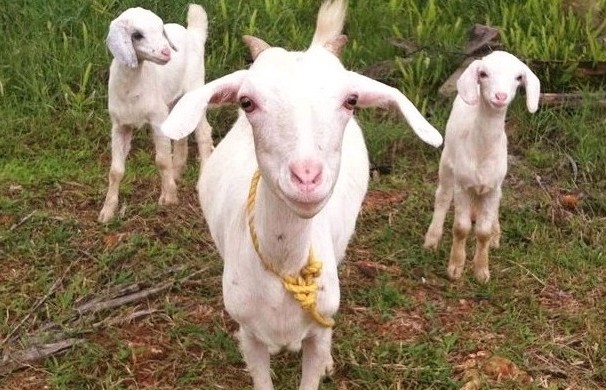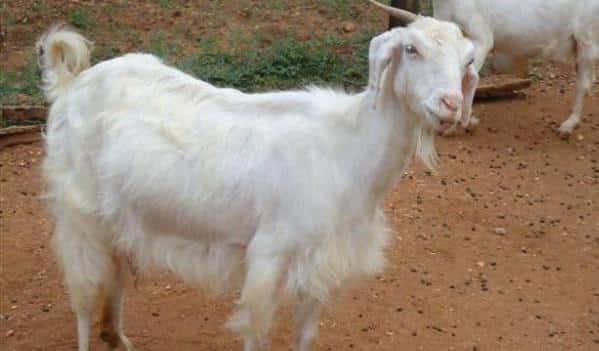Tellicherry Goat Profile Guide:-

Introduction of Tellicherry Goat:- This goat breed is one of the well recognized breeds of Kerala and Tamil Nadu. This breed is excellent of exhibiting higher multiple birth rate and higher milk yields compared to other goat breeds in south India. These goats have good resistance power for most of the weather conditions. Basically this goat breed is raised for meat as well as for milk.
In Kerala, True-bred goats of Tellicherry can be found in the districts of Thalacherry, Kannur, Kasargod, and Kozikkot.
Tellicherry Goat Description:- This goat breed is a medium sized goat and do not have any uniform body colour. However most of the goats are in white colour. You can also find these goats with black or with mixed colours of black, white and brown. These goats have medium sized head with straight face and some goats have slightly raised face also.
Kidding in Tellicherry Goat:- In this goat breed, a female (doe) goat of tellicherri gives birth to four kids in a year and the kids are sold for Rs 3,000 each at the age of 3 months. Triplets are very common in this breed.
Milk yield of Tellicherry Goat:- An average Tellicherry female goat gives 65 to 70 kg of milk in a lactation period of 6 months.

Feed feasibility of Tellicherry Goat:– These goats can also be fed with coconut oil cakes and jack leaves.
Weight gain in Tellicherry Goat:- These goats can gain weight of 20 to 25 kg in 90 days, provided with good feed.
These goats will come to maturity (for breeding) in five to six months of age, at this point you can expect about 2 litres of milk and these goat milk will be thicker than other goat milk.
Best feed for Tellicherry Goat:- Natural grass, CO 3 and CO 4. However, CO 3 & CO 4 grass will increase their weight and milk yield.
Tellicherry Goat Price:- In pure breed, you can get live weight @ Rs. 275 per kg in female goats where as in male goats is about @ Rs. 290/kg.
Tellicherry Goat Body Weight Features:-
Size of the goat Bucks (Male) Does (Female)
Body Weight 38 kg 31 kg.
Body Length 70 cm 63 cm.
Chest Girth 73 cm 67 cm.
To find out Complete Goat Farming information: Read Here.
Thalaiserry goat one pair how much
Dear Sir/ Ma’am,
I am planning for a commercial goat farming in Tirunelveli. I want to buy original Thalassery breed. Where to buy, please guide me
You can buy from St.Antony’s Goat Farm, Tirunelveli
Dear sir ,mam
Where I can purchase this type of goat near dindugul , Karur,Trichy places
I have already goat farm ,but I didn’t have this breed